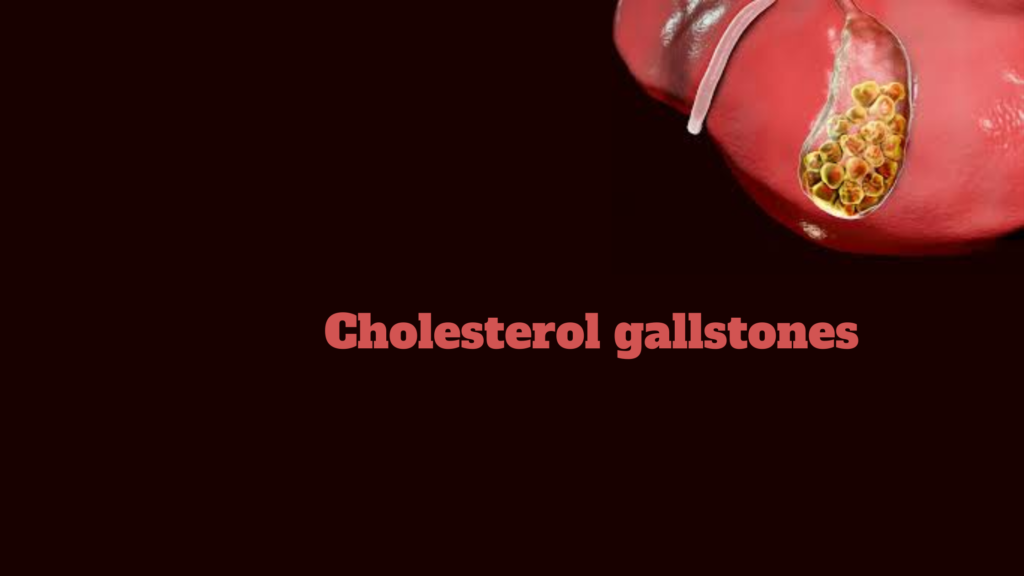
Cholesterol gallstones are the most prevalent type of gallstones, primarily composed of hardened cholesterol deposits that form in the gallbladder. They can range in color from yellow to green and vary in size from small grains to large stones.
🧬 Pathophysiology
Cholesterol gallstones develop when the bile, a digestive fluid produced by the liver, becomes supersaturated with cholesterol. This excess cholesterol crystallizes and, over time, forms stones. Factors contributing to this process include:(mayoclinic.org)
- Excessive cholesterol secretion: Conditions like obesity, diabetes, and metabolic syndrome increase cholesterol levels in bile. (emedicine.medscape.com)
- Reduced bile salt secretion: Diseases such as cystic fibrosis can decrease bile salt levels, leading to cholesterol crystallization. (msdmanuals.com)
- Gallbladder stasis: Impaired gallbladder emptying, often due to pregnancy or certain medications, allows bile to become overly concentrated.
⚠️ Risk Factors
Several factors increase the likelihood of developing cholesterol gallstones:
- Gender and age: Women, especially those over 40, are at higher risk.
- Obesity and rapid weight loss: Excess body weight and quick weight reduction can elevate cholesterol levels.
- Pregnancy: Elevated progesterone levels during pregnancy can reduce gallbladder motility.(emedicine.medscape.com)
- Medications: Drugs like estrogen and certain cholesterol-lowering agents can increase cholesterol secretion.
- Genetics: Family history plays a significant role, with up to 25% of the risk being hereditary. (emedicine.medscape.com)
🩺 Symptoms
Many individuals with cholesterol gallstones remain asymptomatic. However, when symptoms occur, they may include:(pmc.ncbi.nlm.nih.gov)
- Sudden, intense pain in the upper right abdomen, often after meals.
- Nausea and vomiting.
- Back pain between the shoulder blades.
- Pain in the right shoulder.
These symptoms may indicate a gallbladder attack and require medical attention.
🧪 Diagnosis
Diagnosis typically involves:(mayoclinic.org)
- Ultrasound: The primary imaging tool for detecting gallstones.
- CT scan or MRI: Used in complex cases or when complications are suspected.
- Blood tests: To assess liver function and detect signs of infection or inflammation.
🛠️ Treatment Options
Treatment depends on the severity and symptoms:
- Cholecystectomy: Surgical removal of the gallbladder is the definitive treatment for symptomatic gallstones.(truemeds.in)
- Non-surgical therapies: For those unable to undergo surgery, options include:
- Ursodeoxycholic acid: A medication that can dissolve small cholesterol stones over time.(health.com)
- Shock wave therapy: Uses sound waves to break up stones.(health.com)
- Endoscopic procedures: To remove stones from bile ducts. (health.com)
🛡️ Prevention Strategies
To reduce the risk of cholesterol gallstones:(emedicine.medscape.com)
- Maintain a healthy weight: Avoid rapid weight loss.(verywellhealth.com)
- Adopt a balanced diet: High in fiber and healthy fats, and low in refined sugars and cholesterol.(pmc.ncbi.nlm.nih.gov)
- Regular physical activity: Helps maintain bile flow and overall health.
- Avoid fasting: Regular meals prevent bile concentration.
